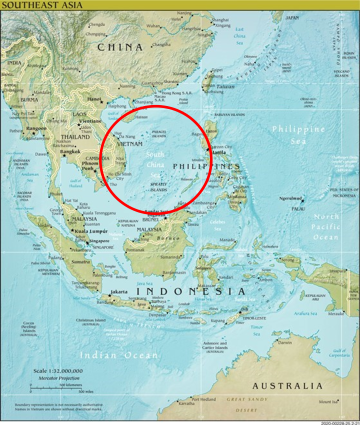730624_Climate Ripples_360 px width.png

Map of the South China Sea (circled), where changes in climate may influence the rest of the world. Credit: The World Factbook, CIA
The classic example of chaos theory is called the butterfly effect: If a butterfly flaps its wings over China, it creates ripples in the air that might eventually trigger storms over the Americas. Something similar may be playing out over the South China Sea and the surrounding land: Changes in climate conditions there may influence the rest of the world.
The South China Sea covers almost one and a half million square miles. It’s bounded by Southeast Asia and the islands of the Philippines and Indonesia. Influenced by climate change in Asia, its waters are warming faster than most of the world’s oceans.
Scientists say that’s influencing conditions not only across the region, but worldwide. There’s more evaporation from the warmer waters, which is changing circulation patterns in the atmosphere above it, for example. These patterns interact with others. That creates a ripple effect that can travel around the globe—like the ripples caused by that pesky butterfly.
Climate models suggest possible impacts on specific regions as the South China Sea and the surrounding area get even warmer. The timing and strength of El Niño and La Niña might change, for example. Ditto for the monsoons in Asia. The Americas might see greater extremes in temperature and precipitation, parts of Asia might have more spring and summer droughts, and sea ice could change in both the Arctic and the Antarctic—some possibly chaotic results of our changing climate.

